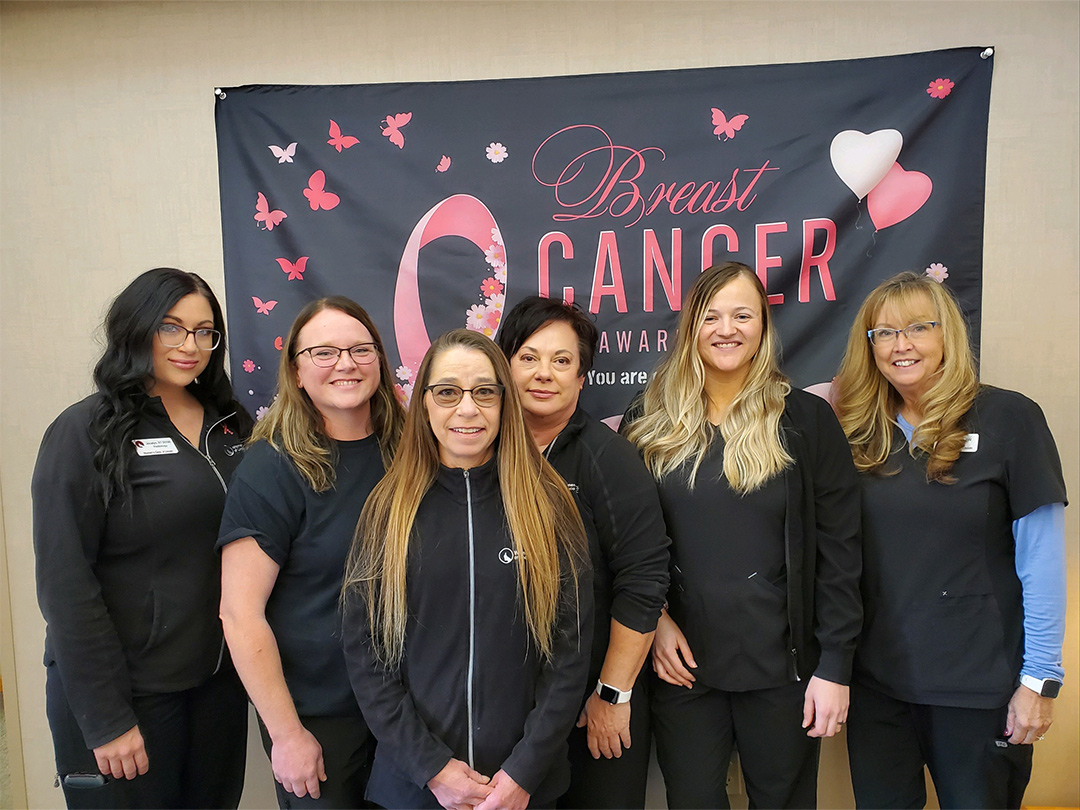Breast Care

Mammogram
Breast care is an essential part of women’s health care. Women’s Clinic offers the latest in mammography screening by offering patients 3D Mammography, as known as breast tomosynthesis, for breast cancer screening. By using this technology providers expect greater accuracy, earlier detection, fewer callbacks for additional imaging and reduced false positives.
The 3D mammography experience is similar to a traditional 2D mammogram. There’s no additional compression required and it only takes a few seconds longer for each view. The exposure to x-ray energy remains very low and is well within the safety standards for mammography. The Mammography Department at Women’s Clinic of Lincoln is accredited through ACR and is committed to providing their patients with the latest technological advances in breast health. 3D mammography is another powerful tool in early detection of breast cancer and we hope all women will be inspired to learn more about the benefits of 3D mammography and early detection of breast cancer.
The American Cancer Society recommends that women at average risk for breast cancer follow these guidelines:
A woman at average risk doesn’t have a personal history of breast cancer, a family history of breast cancer, a genetic mutation known to increase risk of breast cancer (such as BRCA), and has not had chest radiation therapy before the age of 30.
- Women between 40 and 44 have the option to start screening with a mammogram every year.
- Women 45 to 54 should get mammograms every year.
- Women 55 and older can switch to a mammogram every other year, or they can choose to continue yearly mammograms. Screening should continue as long as a woman is in good health and is expected to live 10 more years or longer.
The American Cancer Society screening recommendations for women at higher than average risk. Women who are at high risk for breast cancer based on certain factors should get an MRI and a mammogram every year. This includes women who:
- Have a lifetime risk of breast cancer of about 20% to 25% or greater, according to risk assessment tools that are based mainly on family history (such as the Claus model – see below)
- Have a known BRCA1 or BRCA2 gene mutation
- Have a first-degree relative (parent, brother, sister, or child) with a BRCA1 or BRCA2 gene mutation, and have not had genetic testing themselves
- Had radiation therapy to the chest when they were between the ages of 10 and 30 years
- Have Li-Fraumeni syndrome, Cowden syndrome, or Bannayan-Riley-Ruvalcaba syndrome, or have first-degree relatives with one of these syndromes
Breast Ultrasound
Breast ultrasound is useful for looking at some breast changes, such as those that can be felt but not seen on a mammogram or changes in women with dense breast tissue. It also can be used to look at a change that may have been seen on a mammogram. Ultrasound can be used to tell the difference between fluid-filled cysts and solid masses.
Breast ultrasound uses sound waves to make a computer picture of the inside of the breast. A gel is put on the skin of the breast and an instrument called a transducer is moved across the skin to show the underlying tissue structure. The transducer sends out sound waves and picks up the echoes as they bounce off body tissues. The echoes are made into a black and white image on a computer screen. This test is painless and does not use radiation. The images acquired are interpreted by a board-certified radiologist. The radiologist’s report and recommendations are then reported back you.

